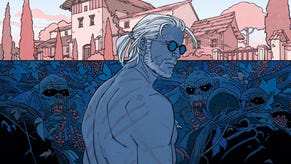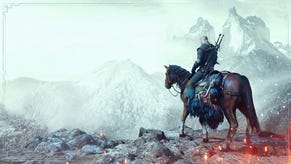Performance Analysis: The Witcher 3: Blood and Wine
New expansion compared on PS4, Xbox One and PC.
The new Toussaint region of The Witcher 3's Blood and Wine expansion looks stunning on PC, but its delivery on console has - until now - been a mystery. To benefit the PlayStation 4 and Xbox One delivery of this new area, developer CD Projekt Red states a more memory-efficient approach to streaming in assets is in effect here - in theory helping to improve frame-rates over the base game. But how does either stack up to the PC release, and are there any lingering performance troubles?
The basic setup remains from the original The Witcher 3 content, in certain respects. We get a full native 1920x1080 on PS4, while Xbox One typically runs at 1600x900. For the most part this defines the rift in visual quality between the two; an upscaled image causing details to blur on Xbox One - while texture quality is identical when viewing the console outputs up-close. Each also matches PC's best quality texture maps, and thankfully the layout of geometry across Toussaint is unchanged, meaning consoles get this beautiful new area in all its glory.
There is a visual advantage on PC, and the differences between the three versions of Blood and Wine largely come down to draw distances. For example, PC's overview of Toussaint's main city reveals a broader draw distance for shadow detail, while more trees also render in across its far hillsides. This only occurs at extreme range however, and PS4 and Xbox One tend to produce the same density of foliage and NPCs while in the city's main plaza. Each is rife with detail, but it's only in moving to PC that we realise what the ultra setting for terrain brings to the table.
The good news is this area looks gorgeous on both consoles, but a question hangs over how performance holds up. In going into such a detail-rich area, we'd hope to not see a repeat of Crookback Bog's performance - an area of the base game in which PS4 and Xbox One played closer to 20fps. Fortunately, this Blood and Wine expansion's first two hours run at a near locked 30fps for the most part, and Geralt's journeys by horseback are only interrupted by occasional, one-off stutters.
However, as we venture closer to the city, Xbox One begins to fall short of PS4's performance level. Both consoles suffer a single streaming hiccup as we approach the castle (an irregular, one-off 15fps hitch that's hard to repeat), but it's Xbox One that continues to drop frames after this point. Cantering through a bustling market street, Xbox One settles at a 28-30fps range of performance overall, compared to a sturdier 30fps line on PS4. The good news is that moving further into the city puts both neck-and-neck at the target 30fps once again.
In other words, this city area runs well once we get to its centre, but on approach Xbox One has more issues holding a firm 30fps. Likewise, in earlier battles with the river-dwelling Scurver creatures, Xbox One struggles as we land each blow - and in particular as they detonate once pushed to a final sliver of health. At lowest we see a dip to 26fps on Xbox One in this case, while PS4 drops frames to 28fps at its lowest. This isn't the typical result in most battles however, and an encounter with the Golyat boss shows barely a dip on either format.
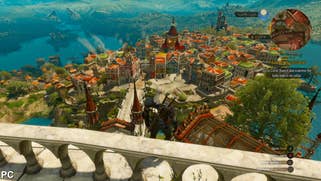


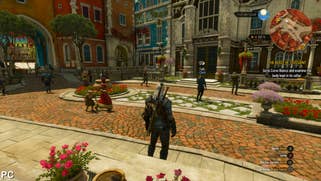
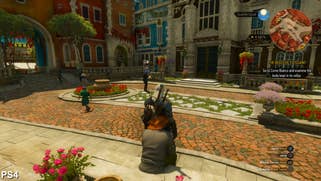

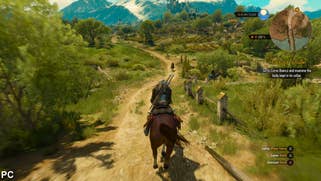
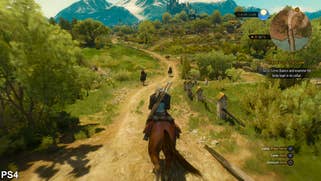
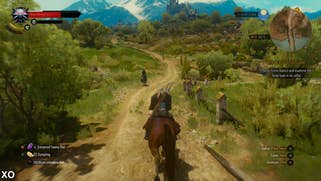
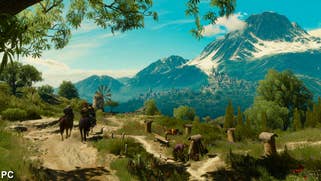

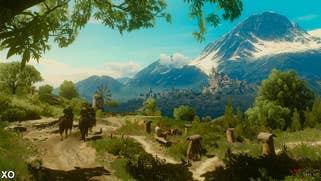
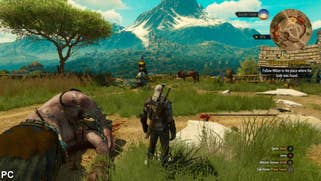
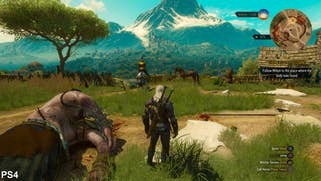
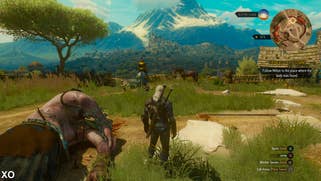
As a whole, PS4 and Xbox One's performance in Blood and Wine is largely on par with the better sections of the base game, and we've yet to encounter anything as testing as Crookback Bog. Given the complex visual design of this expansion, frame-rate delivery is still usually smooth on both consoles - though PS4 gets the better deal overall, with a tighter lock on 30fps, broader foliage draw distances and a native 1080p image. It's impressive how much of the PC rendition of this region holds over, and it's only on sweeping pans from the castle's upper levels that we see any cutbacks on PS4 and Xbox One.
With each patch after its release, CD Projekt Red has attempted a finer balance between The Witcher 3's visuals and frame-rate on console. Technically, this latest expansion marks the team's biggest step forward, with optimisations allowing for more ambitious visuals, and with fewer penalties in performance. It may be the last foreseeable update to The Witcher series, but Blood and Wine is a great finishing note - and hopefully a sign of how its upcoming Cyberpunk 2077 project will fare on console.






